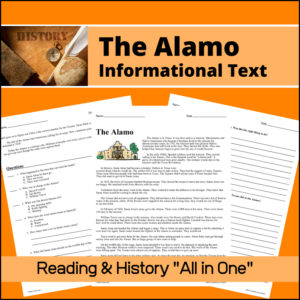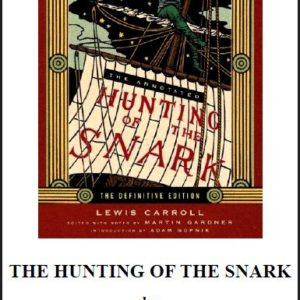Category: Reading
- Home
- /
- Shop
- /
- By Subject
- /
- Language Arts
- /
- Reading
- /
- Page 16
Showing 301–320 of 346 resultsSorted by latest
-
 $8.00Buy Now
$8.00Buy NowWe have now combined all 220 Dolch sight words into one bundle! So, with this purchase, you’ll not only get the 1st grade Dolch sight words but all 220 words: Pre-Primer, Primer, 1st grade, 2nd grade and 3rd grade.
Dolch Sight Words have been found to be the most frequently used words in reading and writing. They include pronouns, adjectives, adverbs, prepositions, conjunctions and verbs that are difficult to sound out and are best learned by sight and repetition. By learning and practicing these words, children will enhance their reading skills and build confidence while doing so.
-
 $3.00Buy Now
$3.00Buy NowDickens’ best-known work of historical fiction, with over 200 million copies sold A Tale of Two Cities is regularly cited as the best-selling novel of all time. A Tale of Two Cities is an 1859 historical novel by Charles Dickens, set in London and Paris before and during the French Revolution. The novel tells the story of the French Doctor Manette, his 18-year-long imprisonment in the Bastille in Paris and his release to live in London with his daughter Lucie, whom he had never met. The story is set against the conditions that led up to the French Revolution and the Reign of Terror.
- Interest Level: Grade 5 – Grade 12 ·
- Reading Level: Grade 9
-
 $1.00Buy Now
$1.00Buy NowThis John Cabot resource is perfect for a quick World History lesson or a Language Arts lesson! Cabot’s was an Italian navigator and explorer. His 1497 discovery of the coast of North America under the commission of Henry VII of England is the earliest known European exploration of coastal North America since the Norse visits to Vinland in the eleventh century. Students will enjoy learning more about this explorer and how he too (like Columbus) thought he had sailed to the Far East!
-
 $5.00Buy Now
$5.00Buy Now– Create multiple literacy centers with this gingerbread man themed resource! Use in the month of December if you want to make Christmas-themed centers or use anytime if you want to center it around the story of the Gingerbread Man.
Here is what you’ll get:
- – 3 Differentiated Unit Suggestions (for using with the very young learning their letters through using with students who can form words – both basic CVC words to words formed with digraphs and blends.)
- – 27 pages of letter and word part cards (for a total of 162 cards)
- – Word Mat & Word recording worksheets
- – Lists for 27 different word families
-
 $1.50Buy Now
$1.50Buy NowThis resource offers reading comprehension and discussion questions about the story and characters.
About the book (Not included):
Little House on the Prairie was the third novel published in the Little House series, continuing the story of the first, Little House in the Big Woods (1932), but not related to the second. Thus, it is sometimes called the second one in the series, or the second volume of “the Laura Years”.Interest Level:
Grades 4 – 8Reading Level:
Grades 4 – 5 -
 $1.50Buy Now
$1.50Buy NowThis informational article will inform students about the history behind and the symbolism of the Olympic rings. After reading one page of text, student comprehension will be assessed by answering 11 short answer questions. There is also a fun, creative project included.
Automated Readability Index: 6.2
Grade level: 10-11 yrs. olds (Fifth and Sixth graders) -
 $2.00Buy Now
$2.00Buy NowInformational Text – The First Thanksgiving? was created to give your students not only a clear understanding of the history behind the holiday we call ‘Thanksgiving’ but also about how it is a story of struggle, hope and resilience.
-
 $1.00Buy Now
$1.00Buy NowPart of understanding any written text is being able to determine the author’s purpose. Was the piece written to persuade, to inform or to entertain? This Language Arts / Reading worksheet provides a place for students to ask themselves important questions about the text to help them determine what the purpose of the text is. They will also be asked to support their conclusion with clue’s from within the passage.
-
 $2.50Buy Now
$2.50Buy NowThis is a downloadable copy of the book.
About the book: This book was the last of James Fenimore Cooper’s Leatherstocking Tales to be written. Its 1740-1745 time period makes it the first installment chronologically and in the lifetime of the hero of the Leatherstocking tales, Natty Bumppo. The novel’s setting on Otsego Lake in central, upstate New York, is the same as that of The Pioneers, the first of the Leatherstocking Tales to be published (1823). The Deerslayer is considered to be the prequel to the rest of the series. Fenimore Cooper begins his work by relating the astonishing advance of civilization in New York State, which is the setting of four of his five Leatherstocking Tales.About the Author: James Fenimore Cooper was an American writer of the first half of the 19th century. His historical romances draw a picture of frontier and American Indian life in the early American days which created a unique form of American literature.
-
 $1.50Buy Now
$1.50Buy NowThe Alamo – Informational Text is a resource designed to give your students a better understanding of the Alamo and answer the following questions for them: What is it? Where is it? What happened there? What is it today?
Cross-curricular – As students read for understanding they will be learning about an important landmark and event in U.S. History. After reading, students will answer multiple choice, short answer and short essay questions.
-
 $4.99Buy NowNovember NO PREP Print and Go Learning Pack for 1st Grade! Over 90 pages of learning.Math: Fractions, Patterns, Counting, Place Value, Skip Counting, Counting Money (Nickels and Quarters), Word Problems, Reading Graphs/Coordinates, Single digit addition and subtraction, Telling timeLanguage Arts: Writing, Reading Skills, Rhyming, Phonics, Syllables, ABC Order,Critical Thinking Skills with November themed puzzles, Crafts…and more!!
$4.99Buy NowNovember NO PREP Print and Go Learning Pack for 1st Grade! Over 90 pages of learning.Math: Fractions, Patterns, Counting, Place Value, Skip Counting, Counting Money (Nickels and Quarters), Word Problems, Reading Graphs/Coordinates, Single digit addition and subtraction, Telling timeLanguage Arts: Writing, Reading Skills, Rhyming, Phonics, Syllables, ABC Order,Critical Thinking Skills with November themed puzzles, Crafts…and more!! -
 $1.50Buy Now
$1.50Buy NowThis informational article will teach students about the sand dollar. They will learn that the little round, coin-shaped shell found on the beach is actually part of a marine animal, related to sea urchins and sea stars. They will also learn how living sand dollars move, that they aren’t ‘white’, how and what they eat and much more. After reading, students will complete two worksheets (multiple choice and short answer) to assess their comprehension / understanding of the material. Answer Key is provided.
Automated Readability Index: 4.8
Grade level: 8-9 yrs. old (Fourth and Fifth graders)
Linsear Write Formula : 5.6
Grade level: Sixth Grade. -
 FREEBuy Now
FREEBuy NowThis is a free downloadable book.
Please note: This book has no illustrations. -
 $3.50Buy Now
$3.50Buy NowA cross-curricular (Science / Literacy – Writing) product that will have students creating their very own mini-books detailing the life cycle of a ladybug!
Knowledge students will learn:
- -The ladybug is a beetle
- -Mother ladybugs lay tiny yellow eggs in clusters under a leaf
- -When the larva hatches, it eats. What do ladybugs eat? Students will find out!
- -What the ladybug pupa looks like before attaching itself to a leaf
- -The pupa grows, molts and changes…emerging as a ladybug!
Students will:
- -Read the text
- -Draw a picture
- -Write (copy work) the written text.
Benefits of this resource:
- -Low prep – print and give to students
- -Children learn about the ladybug life cycle while reading, drawing and writing
- -Encourages fine motor skills through coloring and writing plus scissor skills as the cut out each page along the dotted lines
- -Encourages reading skills as students read and copy the text
- -Finished book can be a keepsake Science mini-book and added to end-of-the-end portfolio.
What is included? 11 ready-to-use student pages
⭐⭐Use along or with: Ladybug Life Cycle | Posters and Worksheets
-
 $8.00Buy Now
$8.00Buy NowStudents LOVE these printables and will be excited to get started every morning. Using these pages will allow students to ease into their routine for the day as they work on developing important kindergarten skills.
⭐Is included in our money saving BUNDLE: Kindergarten Daily Worksheets | Full Year BUNDLE
⭐ What’s Included: 96 student pages
⭐ Skills covered:
- – Letter recognition and identification (upper and lower case)
- – Letter tracing
- – Letter sounds
- – Number recognition and identification (1-10)
- – Number tracing
- – Counting skills
- – Number word recognition
- – Number line work
- – Basic math (before and after)
- – Shapes
- – Colors
- – Fine motor skill practice (tracing, coloring, drawing)
- – Following directions
⭐ Print and Go!
-
 $5.00Buy Now
$5.00Buy NowThis workbook includes 50 fun and engaging pages (a page for each of the 2nd 50 Fry sight words)… Students will learn sight words by tracing, coloring, and writing the words as well as identifying and build each word (cutting & pasting)!
-
 $2.00Buy Now
$2.00Buy NowThis is a downloadable copy of the book. (30 pages)
Excerpt from the book: Alexander Graham Bell – teacher, scientist, inventor, gentleman – was one whose life was devoted to the benefit of mankind with unusual success. Known throughout the world as the inventor of the telephone, he also made other inventions and scientific discovers of first importance, greatly advanced the methods and practices for teach the deaf and came to be admired and loved throughout the world for his accuracy of thought and expression.
-
 $2.50Buy Now
$2.50Buy NowThis is a downloadable copy of the book.
About the book: A poem typically categorized as a nonsense poem. Written from 1874 to 1876, the poem borrows the setting, some creatures, and eight portmanteau words from Carroll’s earlier poem “Jabberwocky” in his children’s novel Through the Looking-Glass (1871).About the Author: Lewis Carroll, was an English writer of world-famous children’s fiction, notably Alice’s Adventures in Wonderland and its sequel Through the Looking-Glass. He was noted for his facility at word play, logic, and fantasy. The poems Jabberwocky and The Hunting of the Snark are classified in the genre of literary nonsense. He was also a mathematician, photographer, and Anglican deacon. (Lewis Carroll is a pen name – Given name was Charles Lutwidge Dodgson)
-
 $2.00Buy Now
$2.00Buy NowThis is a downloadable copy of the book.
About the book: The story is narrated in the first person as an autobiographical memoir told by the titular horse named Black Beauty—beginning with his carefree days as a colt on an English farm with his mother, to his difficult life pulling cabs in London, to his happy retirement in the country. Along the way, he meets with many hardships and recounts many tales of cruelty and kindness. Each short chapter recounts an incident in Black Beauty’s life containing a lesson or moral typically related to the kindness, sympathy, and understanding treatment of horses, with Sewell’s detailed observations and extensive descriptions of horse behavior lending the novel a good deal of verisimilitude.About the Author: Anna Sewell was an English novelist. She is well known as the author of the 1877 novel Black Beauty, which is now considered one of the top ten bestselling novels for children ever written, although it was intended at the time for an adult audience.


